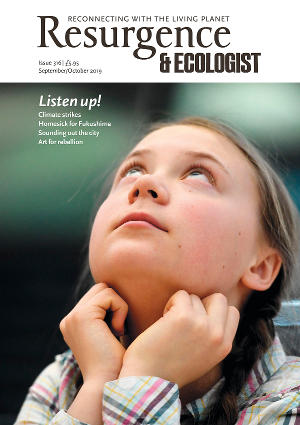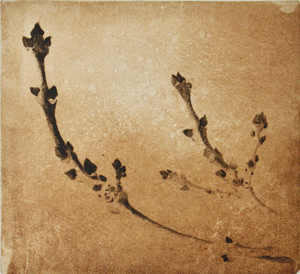During 2019, many of us across the UK have been looking anxiously at ash trees, thinking, “This year it will really start to show.” Ash is always the last tree to come into leaf, but this spring there were many bare twigs that will not produce leaves again. The march of ash dieback is upon us. All around us, ash trees are dying quietly.
Ash dieback is a fungal disease that attacks the common ash tree, Fraxinus excelsior. It is caused by the fungus Hymenoscyphus fraxineus, which originally came from Eastern Asia and has spread throughout Europe, decimating ash populations. The spores of H. fraxineus can be carried on the wind, although its spread has been accelerated by trade in ash trees. The fungus can kill young trees quickly, and it weakens older ash trees over a period of years until other pathogens finish them off.
Recent studies suggest that we could lose over 95% of our ash trees from the UK in the next 10 years. On a practical level, ash dieback will bring significant challenges and costs for land managers. The health and safety implications of unsafe trees in public areas are huge, with an estimated £30 million per year needed to deal with them in Devon alone.
But figures like this cannot reflect the full impact of such huge ecological change on our society. The looming reality of ash dieback brings the prospect of a different degree of loss to our countryside, one that it is impossible to control: it brings a deep grief.
Ash is Britain’s third most common tree, so familiar that we are used to taking it for granted, like a family member who has always been there for us. It is a core constituent of our broadleaved woodlands, our hedgerows and our timber supply. The ash tree has been fundamental to British life for millennia.
Ash is considered a feminine tree in British folklore, counterpart to the masculine oak, and it brings us protection and healing. Young children would be given ash sap to drink; sick children were passed through a cleft in an ash tree to cure them. Strong ash wood was used for many purposes, from spears and bows in battle to cartwheels, tool handles, wooden bowls and furniture. The yule log was originally made of anash log or a bundle of ash sticks. Both the wassail bowl and the maypole were made of ash, and the witch’s broom or besom was made of an ash staff, with birch twigs bound by willow.
Ash magic is peppered throughout the folk tales of the British Isles, although the benevolence (or otherwise) of individual ash trees varies in the stories. In the Welsh epic of the Mabinogion, Gwydion the magician bears a staff of ash, the World Tree in Celtic mythology, the tree that joins the lower, middle and upper worlds.
However, it’s in the Norse myths that we find the ash tree at its most fundamental, intertwined with Germanic and British tradition. They tell us that at the beginning of time, the first gods found an ash and an elm tree with their roots ripped out of the soil. They set them straight and created the first man (Ask) and woman (Embla), and all the world’s people were descended from these trees.
Connecting the worlds of humans, gods, giants and the underworld is the ash Yggdrasil, greatest and best of trees, the tree that always was and always is and always will be. Yggdrasil holds all of creation. Deer nibble at Yggdrasil, and a dragon devours its roots from the underworld, but it constantly regenerates from the dewdrops that are sprinkled on its roots by the three Fates. It is from Yggdrasil that Odin hangs upside down for nine days and nine nights, learning great wisdom to become Odin the Allfather.
At the end of the Norse mythological cycle, Ragnarök, the end of the world, is brought about by the unleashing of dark and trickster forces. Yggdrasil the ash tree shakes and groans and everything is frightened as wars rage and the land is ravaged by fire. Two humans, Lif and Lifthrasir, hide inside Yggdrasil, and they do not emerge again until the world is safe to reinhabit.
It is tempting to think that ash dieback is a ‘sign’ of our mismanagement of the environment or our ecological doom. This denies the natural law of cause and effect, and I don’t think it is entirely fair in this case. Nevertheless, the loss of ash, and the grief, are on their way.
An important part of grieving is to take inspiration from the one who has died – to take their lessons and use them positively, to find motivation for renewal. How can we find this in the face of such huge change?
Let’s return to the old stories. When the two humans hid inside the trunk of Yggdrasil to survive Ragnarök, they did not emerge afterwards, as from the ark, into a bright, shiny new world. They stepped out into a challenging place, wrecked by the egos and wars of the gods and the giants. They had no choice but to take it on.
It won’t be only the loss of ash trees that is remembered from the mythology of our own times, but also our response. We can replace dead trees with other species, we can value and propagate our woodlands and hedgerows and treat them with respect; we can think about the source of the wood that we use, and how we can use wood more wisely.
Ash dieback is a wake-up call for us to bring genuine renewal to our countryside, not just to stem the loss that will inevitably come, whether that loss is due to greed, technology or disease. It is up to us now to turn our intentions to the positive. Perhaps we can invoke the healing and the inspiration of the ash, greatest and best of trees, to help double our efforts.







